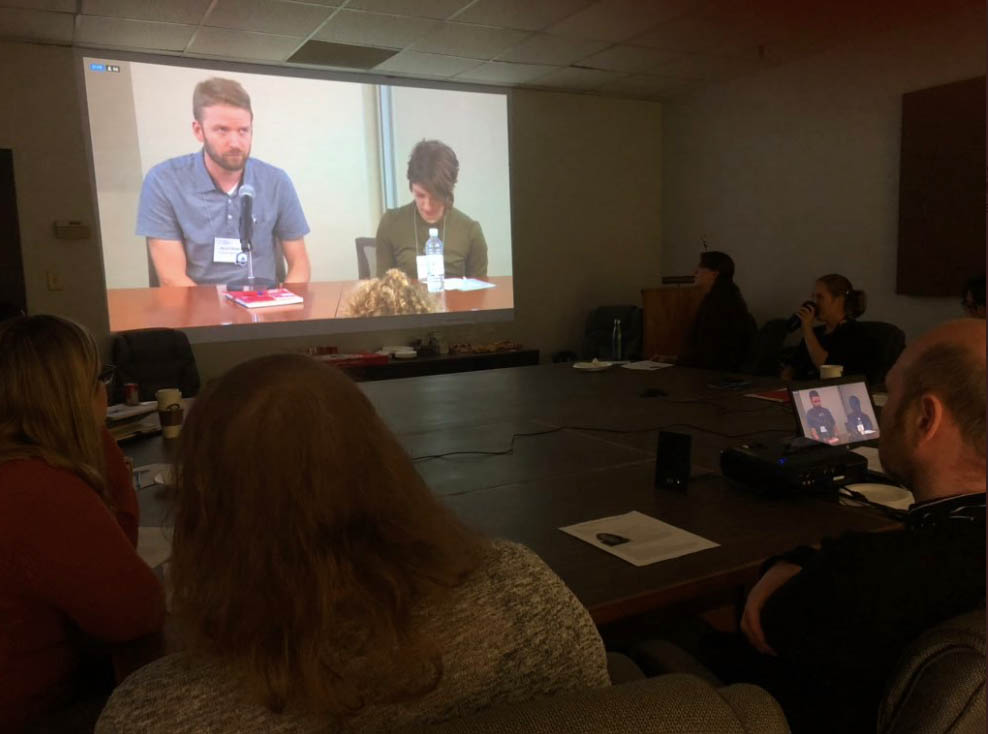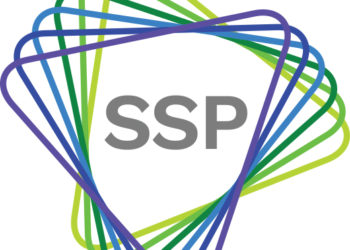Editor’s note: Today’s post is by Amber Dilabbio, Business Analyst at University of Toronto Press, written in collaboration with colleagues in the UTP Journals Division who virtually attended SSP’s New Directions seminar in October.
As a not-for-profit scholarly publisher, it can be challenging to fly representatives out to important industry conferences and presentations. Travel is expensive, budgets are tight, and then there’s the uncomfortable question of who gets to go? Such was the dilemma we faced when we first heard of the Society for Scholarly Publishing’s (SSP’s) New Directions in Scholarly Publishing Models: The Good, the Bad, and the Ugly seminar. After sending two representatives (including myself) from Toronto to San Diego for SSP’s 41st Annual Meeting, we chose to take advantage of this seminar’s virtual attendance option and get the whole Journals team involved. Not only did that turn out to be the right decision for us, but it kept space open to people who could more easily attend in person before the event sold out.
Our viewing party consisted of 10 colleagues on the Journals team, a laptop and projector, and two giant pizzas. With several of us present having attended SSP’s annual conference for some years, we were interested to find out how attending this seminar virtually and as a team would differ from the individual in-person experience. It was a bit chilly and there was some fear that the lawn mower making its rounds would disrupt our party, while from the comfort of our boardroom in Toronto, Ontario, we joined our industry peers in Washington, DC, no passport required, Timmies included; it was great.

Speaking of the “new normal”
Keynote Speaker Rachel Burley started off the seminar discussing the “new normal” in scholarly publishing. To the question of new directions, she suggested that there is no single direction the industry will go, and though we are being constantly disrupted, change is not actually that sudden. She talked about there being no less than 27 open access business models, shared a study where authors ranked speed at the top of their list of priorities and open access much lower, and delved into the topic of preprints. With such a variety of valuable information right off the bat, I almost felt that I needed ten different brains to take it all in.
There was something for everyone on our team to pay attention to from the start. The seminar featured a great set of speakers delving even deeper into open access business models, disrupting peer review, scholarly indexing, and new discoverability tools. Most of us had not heard of distributed usage logging, and I was personally intrigued by the idea that making an archive open access may result in decreased sales but not overall revenue. I found it similar to a day at an industry conference, except that I had my colleagues around me, listening, taking notes, and joining the conversation:
Since research visibility is top priority for us, the panel “Advancements and New Directions in Scholarly Indexing” was an illuminating and much-needed discussion. We took note of several interesting points regarding Impact Factor and were able to expand on these in team discussions. Also, thanks to the considerable social media activity throughout the seminar, attending remotely allowed us to remain thoroughly engaged by asking questions and starting conversations with other participants.
—Justin Lauzon, Marketing Coordinator, University of Toronto Press
Team building
A huge benefit of attending virtually, apart from the resource savings, was that we could share the experience as a team. Each of us watched the same presentations, heard the same debates, and we had our own discussions throughout. We could talk about how the different topics affected us as an organization and a team without a filter or time gap between the conference and our debrief.
Hearing questions and feedback from attendees was particularly interesting, and it spurred further discussions and research with our own organization.
—Melissa Moreau, Editorial, Design, and Production Coordinator, University of Toronto Press
We had an engaging shared experience sitting in a conference room with the seminar up on the big screen, together eating, tweeting, and wondering why we don’t do this more often. The breaks gave us enough time to discuss topics internally, ask our own questions, and when some of us were not as interested or fluent in what was being said, we heard from team members who were.
The “Disrupting Peer Review” panel (with moderator Heather Staines) was the most relevant to me personally as my job is to manage the editorial process. We had an engaging meeting internally about the ins and outs of the peer review workflow as well as discussing challenges that were brought up during the panel. The peer review process is a vital part of the workflow that often has the illusion of quietly humming in the background, and it was nice to put the spotlight on it.
—Sandra Gautreau, Editorial Coordinator, University of Toronto Press
Internal discussions and external networking
One of the greatest highlights of attending this session was our internal discussions during and after the seminar presentations. We could talk about what was relevant to each person’s role without the delay and the distraction of a flooded inbox after a long trip, and each colleague had the opportunity to share their opinion on different topics that the speakers touched on.
The hosting platform had a comment section where we were able to introduce ourselves and see other industry colleagues watching remotely. It was also a great place to post feedback and add questions to the Q&A session. Where we especially found a meaningful connection with in-person attendees and speakers was on Twitter. Several of us on our team participated in the tweet storm under the #sspND2019 hashtag, commenting on the seminar, replying to other attendees, and following other industry professionals who have much to say beyond the seminar.
#sspND2019 Loosely paraphrased from @OnGarrett – The greatest user interface is a spreadsheet and cloud drive.
Yes or No?
— SSP (@ScholarlyPub) October 3, 2019
The hashtag was a good way to facilitate networking in a virtual environment, which is very tricky to do and one of the primary benefits of attending meetings in person. Speakers also repeated key points in tweets and shared links to supporting studies, which we were able to interact with right alongside the seminar. Check out the highlights here: #sspND2019.
Would we do it again?
The big question. A day and half out of the schedules of every person on the team makes it a serious question. Missing the in-person networking is unfortunate, and there is something special about being there, in a new environment with so many different faces and minds. But we had a unique experience as a team, and we took more than enough from the presentations and discussions to call it a great idea. So we would say yes, we would do it again, and maybe tailor our viewing further so that smaller teams attend sessions relevant to their roles. On a whole, it was a valuable experience that we would happily repeat for future seminars given the virtual attendance option. We are also very thankful to SSP and the event sponsors for organizing these fantastic collaborative seminars. Let’s have more!
The SSP’s next event to offer a virtual attendance option is our November 21 regional meeting in Durham, “Creating a Roadmap for Your Career Development.” Click here for more information or to register.
Discussion
4 Thoughts on "Guest Post — Attending an International Seminar from the Comfort of your own Boardroom: A Publisher’s Experience with Virtual Meetings"
In terms of resource management, isn’t an entire day for 10 staff members more costly than a single day for 1 staff member and their expenses?
Yes, I’m not a people manager, but I would expect the cost for staff time to be higher than the travel expenses to send one person. I think the value coming from the two different costs carries a significant counterweight, but it may come down to where it can fit in the budget. Do we have room for those additional travel expenses this year? On the other hand, do we have room to include this seminar in the amount of staff time we generally dedicate to team building and incorporating industry training/career development?
I agree with Amber that having this unique team activity was likely valuable for the team as a whole. In the future as Amber said, smaller teams can gather and attend sessions relevant to their roles. Allows everyone to participate and those who can be budgeted for travel can continue to attend conferences, etc. in person. Nothing beats that face to face meeting.
Shouldn’t the question here should really be more about the value proposition?
If you can expose 10 people to this sort of event for the same price as just one, what impact does that have on your organization?
Amber’s comment in the closing paragraph that UTP would “tailor our viewing further so that smaller teams attend sessions relevant to their roles” makes a lot of sense to me.


